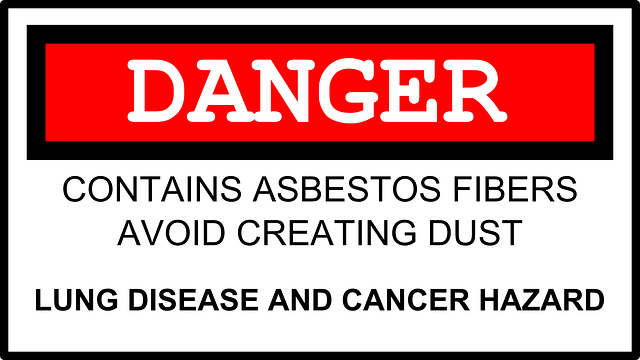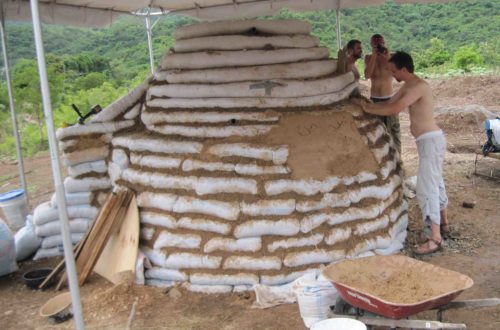Asbestos’s reputation as a health hazard sometimes overshadows its adverse environmental impact. While it’s essential to recognize the safety issues associated with asbestos, it’s also helpful to understand its negative impacts on the environment. Learn five reasons why homeowners should be concerned about asbestos below.
1. Maintaining Safe Air Quality Levels
Asbestos was a popular building material until the early 1980s due to its insulating and fireproofing properties. If you live in a house built before 1990, it may have components harboring this carcinogen.
Residing in a property containing asbestos doesn’t necessarily put you in danger. Disturbing any construction product made with it does. Doing so may release asbestos fibers into the air, increasing your risk of inhaling or ingesting them. They’re invisible to the naked eye, so they can enter your body undetected.
This toxin can cause various diseases in humans, which take the lives of up to 15,000 Americans yearly. It may be as detrimental to animals.
Assume your old home has asbestos to avoid inadvertently polluting the air around you. Take precautions to remediate this harmful mineral before conducting any home improvement project. Asbestos pollution can also spread across the neighborhood.
You may live somewhere with regulations covering home renovations involving asbestos-ridden siding and roofing materials. Ask a relevant state or local government office to discuss your worries and learn what you can do about it.
2. Preserving Soil Health
Airborne asbestos can end up anywhere. It may eventually settle on the ground, which is bad news for the vegetation around your property. This contaminant can reduce soil fertility and adversely impact plant growth.
Growing food organically does more than supply you with nutrition-packed ingredients for home-cooked meals. It also helps reduce your carbon footprint, supports local wildlife, and promotes biodiversity. Native trees require fewer resources to thrive, making them climate resilient.
Vegetation sequesters carbon and prevents it from entering the atmosphere to worsen climate change. Trees with thick foliage provide shade and absorb heat from the air to mitigate the urban heat island effect.
Aside from jeopardizing your gardening efforts, asbestos soil pollution can contaminate water sources. Rainwater runoff can transport this substance to bodies of water, threatening the health and lives of marine critters.
3. Protecting Food Sources
North America had about 8,750 commercial greenhouse vegetable farms in 2022. Cultivated meat manufacturers have become more efficient, but lab-grown proteins are far from mainstream. Many consumers may be reluctant to try them for cultural and ethical reasons.
In other words, most of what you eat, regardless of your diet, still comes from nature. The quality, availability, and affordability of food items sold in farmers markets and groceries depend on environmental conditions.
Asbestos pollution threatens food security. It can reduce crop yields and seafood catches, and so does the nutritional value of foods from plant and animal sources. Even worse, food products exposed to this harmful substance can be toxic. It may take 10-40 years for symptoms of asbestos-associated diseases to manifest, so you can’t tell whether you’re ill overnight.
4. Minimizing Ecological Disruption
Any ecosystem is delicate. All species play a critical role because everything is interconnected. The absence of one can have profound effects on the food web.
Asbestos harms wildlife and disrupts ecosystems. The Biden administration’s decision to prohibit the ongoing use of the last type of this deadly mineral used commercially in the U.S., especially in the automotive industry, should help curb demand for asbestos mining worldwide.
This regulatory barrier prevents more asbestos from coming into built environments. It makes buying a domestically made car more environmentally conscious. Importing a motor vehicle assembled in a country without an asbestos ban could bring this contaminant into your garage.
However, asbestos embedded in everyday products in circulation can cause ecological imbalance when disturbed. Leaving older properties and vehicles alone is an effective way to keep large amounts of asbestos in built environments dormant.
5. Managing Nonbiodegradable Waste
Asbestos doesn’t decompose. It may outlast plastic particles, which can linger on for centuries while polluting seabeds, mountains, and remote islands
While the most convenient way to prevent asbestos pollution is to stay away from structures and objects containing asbestos, you can only do it for so long. At some point, you may have to rehabilitate or demolish a decades-old house.
If you must deal with something that potentially has asbestos, don’t do it yourself. Many companies specialize in handling this carcinogenic material and bringing it to a licensed landfill where it won’t cause any harm to human and wildlife populations. Some businesses have even developed techniques to break it down and destroy its fibers.
Mitigate the Environmental Impact of Asbestos
Unresolved asbestos prevalence is an excellent example of a bad decision made in the past haunting the present generation. Make better decisions to manage it today to give future generations one less environmental challenge to contend with.
Mia Barnes is a health and lifestyle writer with a passion for sustainable wellness and eco-friendly living. Mia is the Editor-in-Chief of Body+Mind magazine with over 5 years of experience in freelance writing.
Image by Clker-Free-Vector-Images






